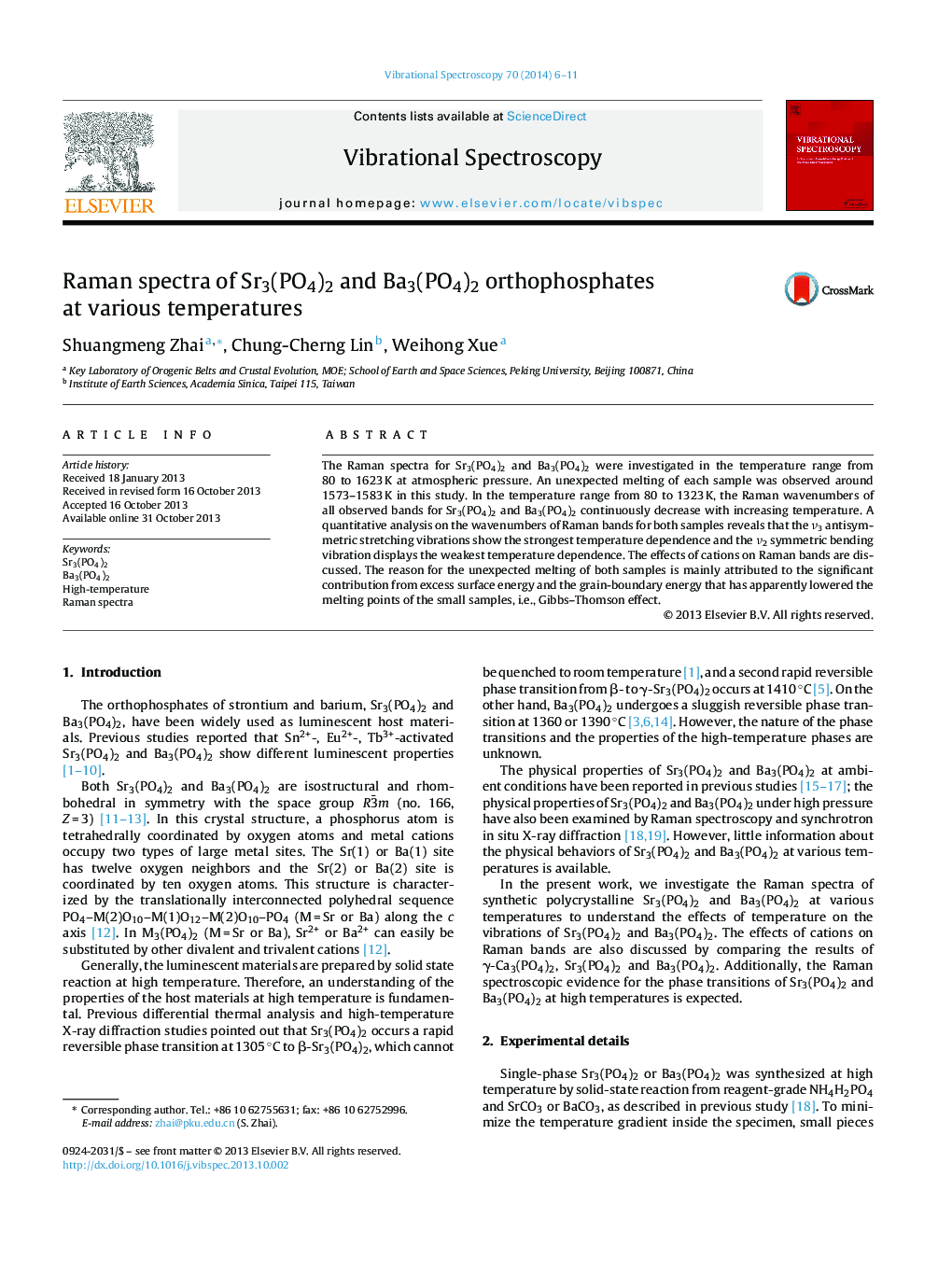| Article ID | Journal | Published Year | Pages | File Type |
|---|---|---|---|---|
| 1249950 | Vibrational Spectroscopy | 2014 | 6 Pages |
•Raman spectra of Sr3(PO4)2 and Ba3(PO4)2 were measured in the temperature range of 80–1623 K.•Temperature dependence of Raman spectra of Sr3(PO4)2 and Ba3(PO4)2 was determined.•Unexpected melting of Sr3(PO4)2 and Ba3(PO4)2 samples occurred at 1573–1583 K.
The Raman spectra for Sr3(PO4)2 and Ba3(PO4)2 were investigated in the temperature range from 80 to 1623 K at atmospheric pressure. An unexpected melting of each sample was observed around 1573–1583 K in this study. In the temperature range from 80 to 1323 K, the Raman wavenumbers of all observed bands for Sr3(PO4)2 and Ba3(PO4)2 continuously decrease with increasing temperature. A quantitative analysis on the wavenumbers of Raman bands for both samples reveals that the ν3 antisymmetric stretching vibrations show the strongest temperature dependence and the ν2 symmetric bending vibration displays the weakest temperature dependence. The effects of cations on Raman bands are discussed. The reason for the unexpected melting of both samples is mainly attributed to the significant contribution from excess surface energy and the grain-boundary energy that has apparently lowered the melting points of the small samples, i.e., Gibbs–Thomson effect.
